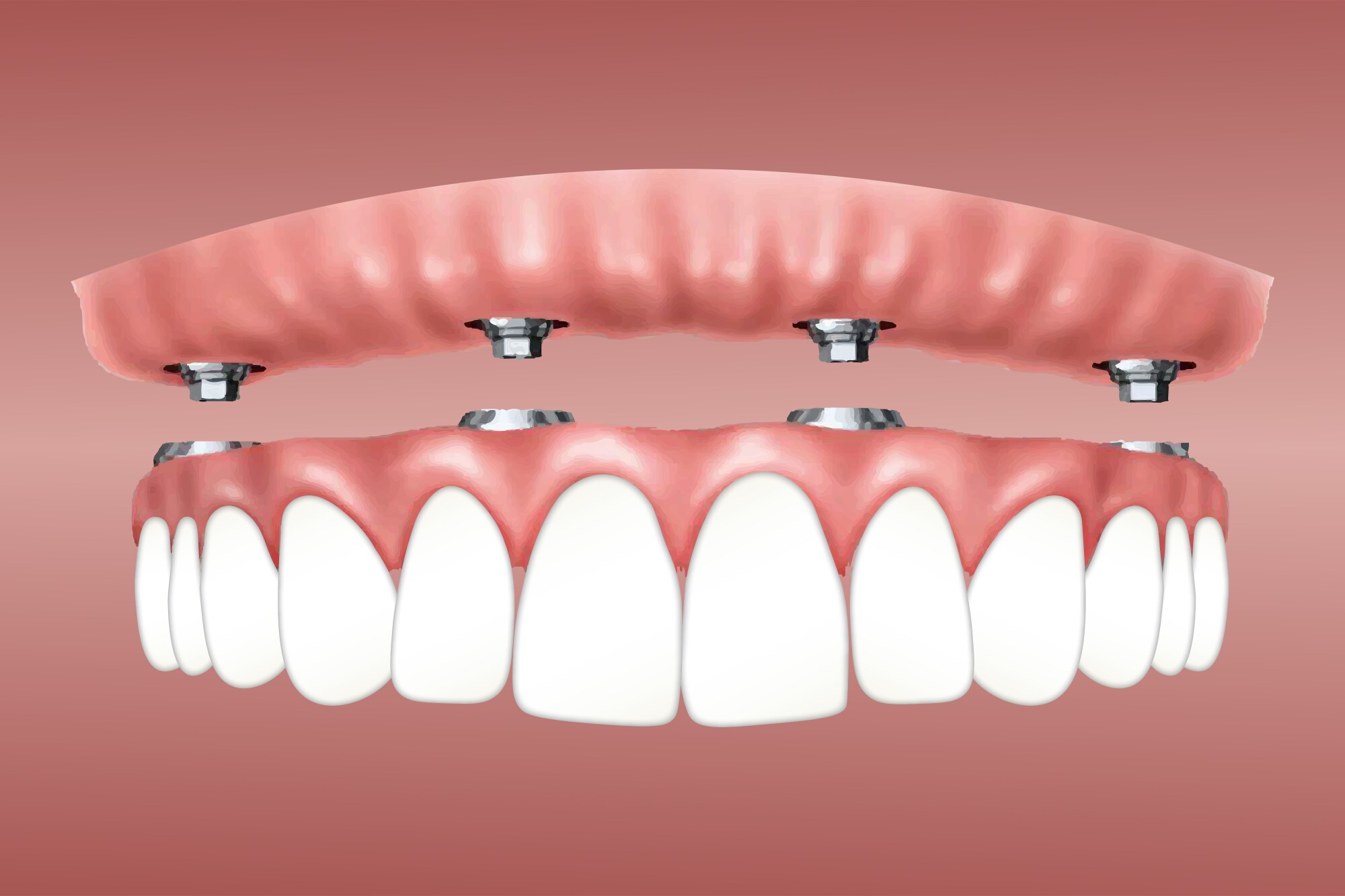9 Simple Techniques For Dental Sense
9 Simple Techniques For Dental Sense
Blog Article
See This Report about Dental Sense
Table of ContentsGetting The Dental Sense To WorkDental Sense Things To Know Before You Buy7 Easy Facts About Dental Sense DescribedThe Single Strategy To Use For Dental Sense
are clinical gadgets surgically implanted into the jaw to restore an individual's ability to chew or their look. They supply assistance for synthetic (fake) teeth, such as crowns, bridges, or dentures. When a tooth is shed because of injury or condition, an individual can experience complications such as rapid bone loss, defective speech, or modifications to chewing patterns that lead to pain.Dental implant systems contain a dental implant body and oral implant joint and might likewise consist of an abutment fixation screw. Dental implants. The dental implant body is operatively placed in the jawbone in location of the tooth's origin. The oral implant abutment is usually connected to the dental implant body by the abutment fixation screw and expands through gums into the mouth to sustain the attached fabricated teeth
(https://dentalsense1.mystrikingly.com/blog/transform-your-smile-with-dental-implants-root-canal-procedures-and)Structure of The Dental Implant System choosing oral implants, talk to your oral service provider about the possible benefits and risks, and whether you are a candidate for the procedure. Points to take into consideration: Your total health and wellness is a crucial aspect in identifying whether you are a good candidate for oral implants, for how long it will take to heal, and the length of time the dental implant may remain in location.
Smoking might impact the healing procedure and reduce the lasting success of the implant. The recovery process for the dental implant body might take several months or longer, during which time you typically have a momentary joint instead of the tooth. the dental implant treatment: Meticulously comply with the oral health directions provided to you by your oral copyright.
What Does Dental Sense Mean?
Implant failure can cause the requirement for one more surgery to take care of or replace the implant system. Recovers the ability to chew Brings back aesthetic look Helps keep the jawbone from reducing as a result of bone loss Preserves the health and wellness of the bordering bone and gums Helps keep adjacent (close-by) teeth steady Boosts quality of life Damage to surrounding all-natural teeth throughout dental implant positioning Injury to the surrounding cells throughout surgical procedure, such as sinus opening Injury during surgical treatment (for instance, fracture of bordering jawbone) Inadequate function, such as really feeling like the teeth do not bite together typically A sensation that the tooth is loosened or turning in location arising from a joint screw loosening Implant body failure (looseness of the dental implant body) as a result of systemic infection, which might be more probable in individuals with unchecked diabetes mellitus as a result of regional infection in bone and gum tissues supporting the implant body as a result of delayed recovery, which may be more probable in patients who smoke Difficulty cleaning the gum tissues around the implant, resulting in inadequate oral hygiene Untreated gum condition Post-surgical tingling because of nerve impingement or damage Constantly alert healthcare service providers and imaging technicians that you have oral implants prior to any type of magnetic resonance imaging (MRI) or x-ray treatments.
FDA is not conscious of any type of adverse occasions reported for MRI or x-ray procedures with oral implants. Oral implants systems are normally made from products that comply with global consensus standards of the International Organization for Standardization (ISO) or ASTM International. These standards have information of what makes a risk-free material.

A dental implant is a structure that changes a missing tooth. With screw-like tools, the doctor inserts a dental implant right into the jawbone, and it serves as an anchor for a fabricated tooth, called a crown. A tool called an abutment connects the fabricated tooth to the dental implant. The crown is tailor-made to fit the person's mouth and match the shade of their teeth.
Dental Sense for Beginners
Some people are not eligible for oral implant surgery. It is for oral cosmetic surgeons to run on individuals with: intense illnessuncontrollable metabolic diseasebone or soft cells condition or infectionIf these problems are fixed, a person can have the surgical procedure. In, oral surgeons refrain from operating on individuals with: If people with any one of the above undertake dental implant surgical procedure, there is a higher threat of the implant falling short.

Oral implant surgery is a personalized process. Provide you time to recover. Attach the blog post and final crown, bridge or denture.
Next, your surgeon will very carefully position the dental implant into your jaw. If your dental implant is near the front of your mouth, your dental practitioner will make a temporary tooth for you to put on up until you recover.
What Does Dental Sense Mean?
Your supplier can inform you what to expect in your situation. During the recovery stage, your jawbone must fuse to the oral implant. This procedure, called osseointegration, is crucial for stability and long-term success. This process can take anywhere from 3 to nine months. Sometimes, it may take much longer.
As soon as your implant heals, your dental professional can connect the joint (small connector blog post) and your last reconstruction (crown, bridge or denture). This generally takes concerning one hour to complete and might require a 2nd small surgical treatment. You should not really feel any kind of discomfort during your dental implant procedure since your provider will utilize drug to go to my site numb your gum tissues.
Report this page